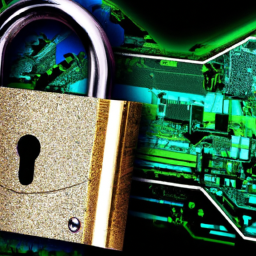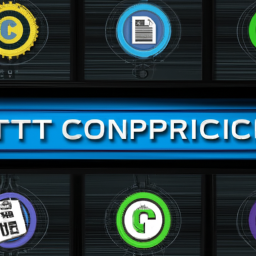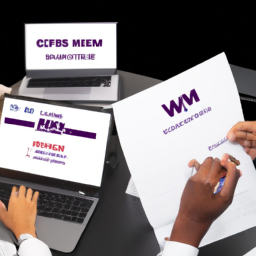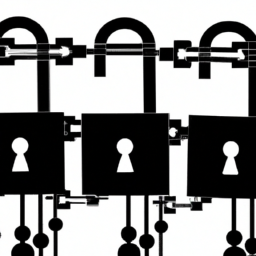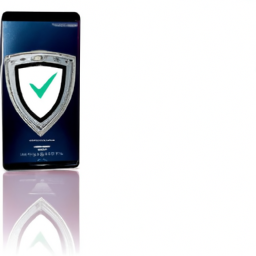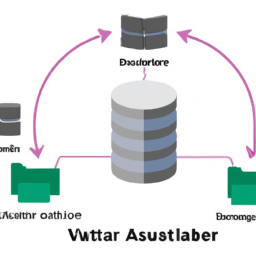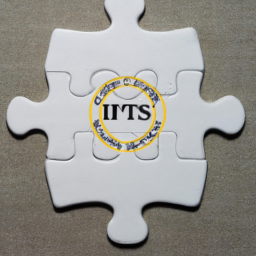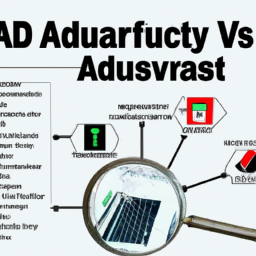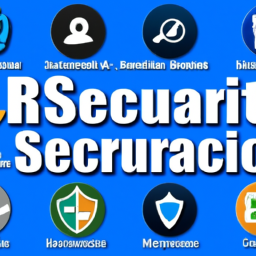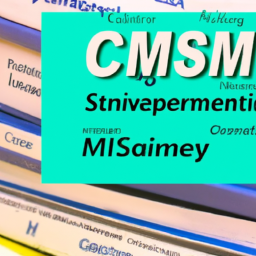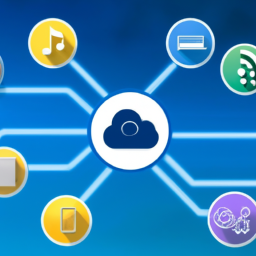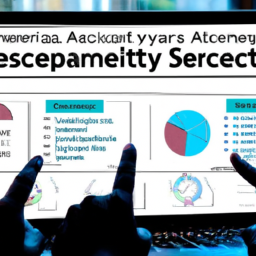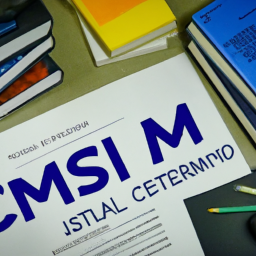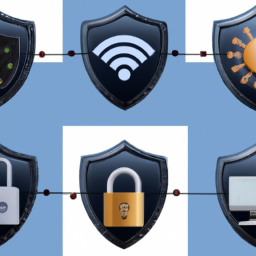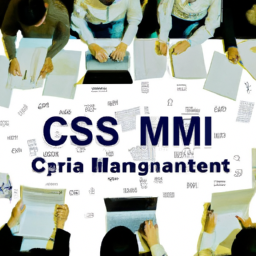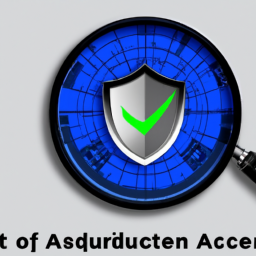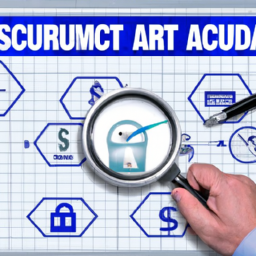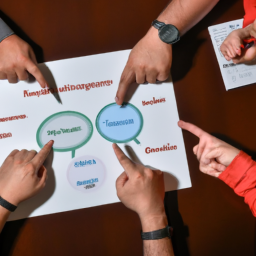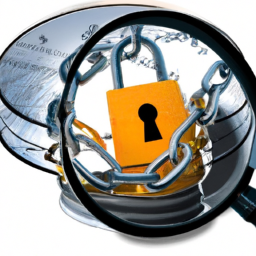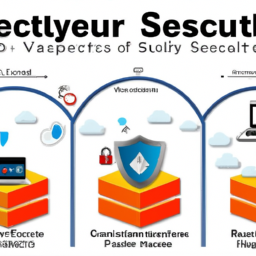Are you ready to play a high-stakes game of cat and mouse with cybercriminals? In this digital age, where applications are the lifeblood of business operations, it’s essential to have robust protection against malicious attacks. That’s where application security frameworks come into play – your secret weapon to safeguarding your applications and preserving your organization’s reputation.
In this article, we dive into the world of application security frameworks, exploring their importance and how they enhance protection for your applications. We’ll guide you through the process of understanding vulnerabilities, implementing necessary controls, and continuously monitoring and improving your application security posture.
But it doesn’t stop there. We’ll also delve into the critical aspect of safeguarding sensitive data – a precious commodity that requires iron-clad defenses.
So, get ready to fortify your applications and stay one step ahead of those who seek to exploit your vulnerabilities. It’s time to take control of your application security and protect what matters most – your business.
Key Takeaways
- Application security frameworks are essential for protecting applications and preserving an organization’s reputation.
- Regular security audits and staying updated with security patches are important for application security.
- Implementing an application security framework helps identify and address security flaws proactively.
- Safeguarding sensitive data requires data encryption, access controls, audit logs, and data classification.
Importance of Application Security
The importance of application security can’t be overstated, as it safeguards sensitive user data and mitigates the risk of devastating cyberattacks.
In today’s digital landscape, security risks in modern applications are ever-present, making it crucial to implement best practices for application security. These risks include vulnerabilities that can be exploited by hackers to gain unauthorized access to an application’s data or functionality.
By adopting robust security measures, such as implementing encryption protocols, enforcing strong authentication mechanisms, and conducting regular vulnerability assessments, organizations can significantly reduce the likelihood of security breaches.
Additionally, following best practices for application security involves staying updated with the latest security patches and conducting regular security audits. Understanding application security frameworks is essential for implementing a comprehensive security strategy that protects applications from potential threats.
Transitioning into the subsequent section, let’s dive deeper into the world of application security frameworks.
Understanding Application Security Frameworks
Did you know that a shocking 86% of cyber attacks target vulnerabilities in software? That’s why it’s crucial to implement robust application security practices to protect your applications from malicious attacks.
Application security frameworks provide a structured approach to enhance the protection of your applications. These frameworks are designed to ensure that industry standards and best practices are followed throughout the development lifecycle. They incorporate various security controls, such as authentication, authorization, encryption, and input validation, to mitigate the risks associated with application vulnerabilities.
By implementing an application security framework, you can proactively identify and address potential security flaws before attackers can exploit them. This helps strengthen the security posture of your applications and minimize the chances of successful cyber attacks.
Assessing application vulnerabilities is the next step in ensuring a robust application security posture.
Assessing Application Vulnerabilities
Now it’s time to evaluate the vulnerabilities within your applications. To ensure the security of your applications, it’s crucial to conduct automated scanning and penetration testing.
Automated scanning involves using specialized tools to scan your applications for any known vulnerabilities. These tools can identify common security issues such as SQL injection, cross-site scripting, and insecure configurations.
Penetration testing, on the other hand, involves simulating real-world attacks to identify any weaknesses in your applications’ defenses. This testing is typically performed by skilled security professionals who use a combination of automated tools and manual techniques to exploit vulnerabilities.
By conducting both automated scanning and penetration testing, you can gain a comprehensive understanding of your application’s security posture and identify any potential vulnerabilities that could be exploited by attackers.
Once vulnerabilities are identified, you can then move on to implementing necessary controls to mitigate these risks.
Implementing Necessary Controls
Take a deep breath and get ready to fortify your applications against potential threats by implementing necessary controls. Ensuring compliance and mitigating risks are essential components in enhancing your application security.
Here are three key controls to consider:
-
Access controls: Implementing strong authentication mechanisms, such as multi-factor authentication and role-based access control, can help prevent unauthorized access to your applications.
-
Secure coding practices: Adopting secure coding practices, like input validation and output encoding, can significantly reduce the risk of common vulnerabilities, such as cross-site scripting and SQL injection.
-
Regular security testing: Conducting frequent security assessments, such as penetration testing and code reviews, can help identify vulnerabilities in your applications and address them before they are exploited.
By following these controls, you can strengthen the security posture of your applications.
Now, let’s transition into the subsequent section about continuous monitoring and improvement, where we’ll explore the importance of ongoing security measures.
Continuous Monitoring and Improvement
With continuous monitoring and improvement, you can constantly strengthen the defenses of your applications and ensure their ongoing resilience against potential threats. Continuous monitoring involves regularly checking your application for vulnerabilities and weaknesses, ensuring that any issues are promptly identified and addressed. By implementing a robust vulnerability management program, you can proactively identify and mitigate potential risks, reducing the likelihood of successful attacks. This involves conducting regular vulnerability assessments, scanning your application for known vulnerabilities, and patching any identified weaknesses. Additionally, continuous improvement is crucial to staying ahead of evolving threats. By staying up to date with the latest security trends and best practices, you can continually enhance your application’s security posture. This includes regularly updating your security controls, implementing new security features, and conducting ongoing security training for your development team. By continuously monitoring and improving your application’s security, you can effectively safeguard sensitive data and protect against potential breaches.
Safeguarding Sensitive Data
To effectively protect your sensitive data, it’s crucial to fortify your data security measures and stay ahead of potential threats. Safeguarding sensitive data involves implementing robust data encryption and access controls. Here are some key measures to consider:
-
Data encryption: Encrypting your sensitive data ensures that even if it’s compromised, it remains unintelligible to unauthorized individuals. Implement strong encryption algorithms and ensure that encryption keys are properly managed and protected.
-
Access controls: Implementing access controls ensures that only authorized individuals can access sensitive data. Use role-based access controls (RBAC) to assign permissions based on job roles and responsibilities. Regularly review and update access privileges to prevent unauthorized access.
-
Audit logs: Maintain detailed logs of data access and modifications. Regularly review these logs to detect any suspicious activity or unauthorized access attempts.
-
Data classification: Classify your data based on its sensitivity level. This allows you to apply appropriate security measures based on the classification, ensuring that sensitive data receives the highest level of protection.
By implementing these measures, you can significantly enhance the protection of your sensitive data and minimize the risk of unauthorized access or data breaches.
Frequently Asked Questions
Are there any specific industry regulations or standards that should be considered when implementing application security frameworks?
When implementing application security frameworks, it’s crucial to consider specific industry regulations, compliance requirements, and standards. These guidelines provide a framework for ensuring the security of your applications.
Examples of industry regulations include the Payment Card Industry Data Security Standard (PCI DSS) for businesses handling credit card information, the Health Insurance Portability and Accountability Act (HIPAA) for healthcare organizations, and the General Data Protection Regulation (GDPR) for companies handling personal data of European Union residents.
Compliance with these standards helps protect sensitive information and maintain trust with customers.
How can organizations ensure that their applications remain secure during the development process?
To ensure your applications remain secure during development, embrace the magical realm of continuous integration and the legendary power of DevSecOps.
This dynamic duo ensures that security is seamlessly woven into every step of the development process. With continuous integration, code is regularly tested, and vulnerabilities are swiftly identified and addressed.
DevSecOps promotes collaboration between developers and security teams, fostering a culture of security awareness and enabling the timely implementation of security measures.
Together, they guarantee an impenetrable fortress for your applications.
What are some common challenges faced by organizations when assessing application vulnerabilities?
Assessing application vulnerabilities can pose several common challenges for organizations.
Identifying all potential vulnerabilities within an application can be time-consuming and complex. Additionally, organizations may struggle with prioritizing vulnerabilities based on their potential impact.
Effective strategies for assessing vulnerabilities include conducting comprehensive security testing, using automated tools for vulnerability scanning, and regularly reviewing and updating security measures.
Implementing application security frameworks requires careful consideration of factors such as the organization’s specific needs, industry regulations, and the level of expertise required for successful implementation.
Success factors include having a dedicated team for security, implementing secure coding practices, and regularly monitoring and updating security measures.
Are there any specific best practices or guidelines that should be followed when implementing necessary controls for application security?
When it comes to implementing application security controls, following best practices and guidelines is crucial. By adhering to these recommendations, you can ensure a thorough and effective approach.
Start by conducting a comprehensive risk assessment to identify potential vulnerabilities. Implement security controls such as authentication, access controls, and encryption to protect sensitive data.
Regularly update and patch your applications to address any known security flaws. Additionally, perform regular security testing and monitoring to identify and remediate any new vulnerabilities that may arise.
How can organizations effectively monitor and improve the security of their applications on an ongoing basis?
To effectively monitor and improve the security of your applications on an ongoing basis, you need to implement a robust system for ongoing monitoring and continuous improvement.
This involves regularly conducting vulnerability assessments and penetration testing to identify and patch any security flaws.
Additionally, implementing a centralized logging and monitoring system can help detect and respond to any suspicious activities or potential breaches.
It’s also important to stay updated with the latest security threats and best practices to ensure your applications remain secure.
Conclusion
In conclusion, application security frameworks play a vital role in enhancing the protection of your applications. By understanding and implementing these frameworks, you can effectively assess vulnerabilities and implement necessary controls to safeguard your sensitive data.
It is crucial to continuously monitor and improve your security measures to stay ahead of potential threats. Remember, the stakes are high when it comes to application security, and a comprehensive approach is essential for ensuring the safety and integrity of your applications.
So, don’t take any chances, prioritize application security today.




